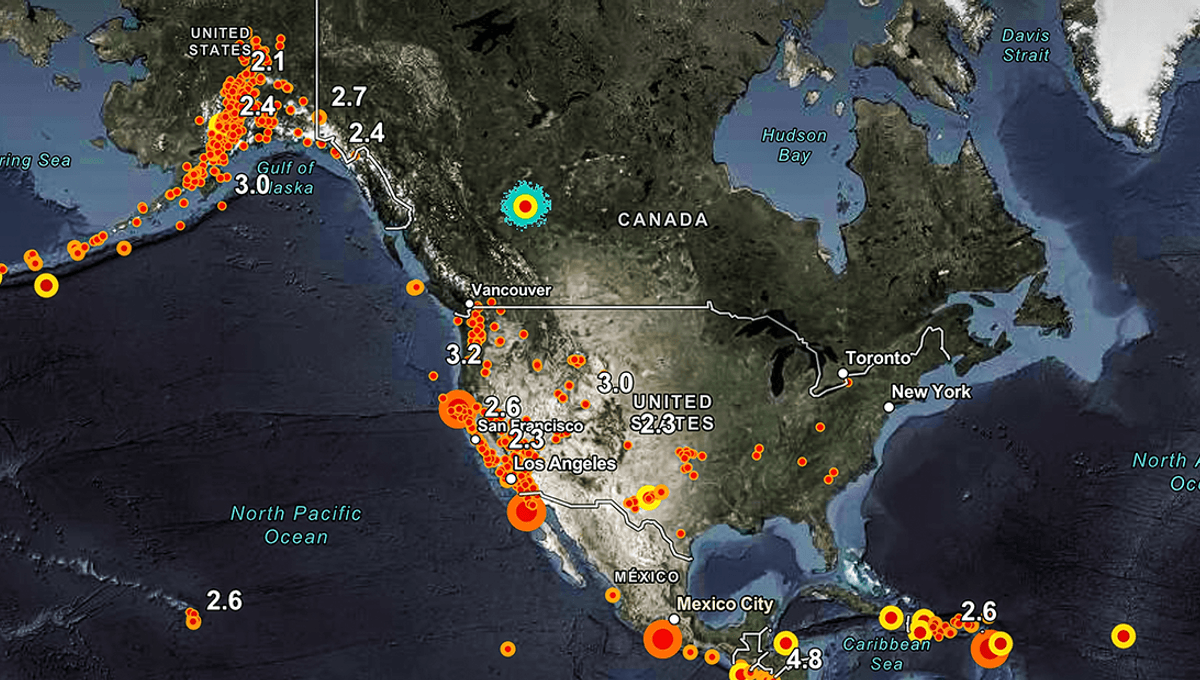
In the 1800s, the USA was hit with some of the largest earthquakes in its history. According to a new study, the country is still feeling the aftershocks.
In the paper, researchers from the University of Missouri and Wuhan University looked at the idea that seismic activity today near the epicenters of large earthquakes over a century ago are actually the rumbling aftershocks of those historical quakes. Aftershocks are sequences of earthquakes that follow earthquakes as the crust readjusts. We’ve known that aftershocks can occur for days, weeks, months, or even years after large earthquakes, with some geologists suggesting far longer timescales.
“Some scientists suppose that contemporary seismicity in parts of stable North America are aftershocks, and other scientists think it’s mostly background seismicity,” Yuxuan Chen, a geoscientist at Wuhan University and lead author of the study, said in a statement. “We wanted to view this from another angle using a statistical method.”
Discerning between current seismic activity and aftershocks of previous earthquakes could help scientists better predict the risk of future quakes to the area. The study focused on three historical seismic events; a 6.5-8.0 in southeastern Quebec, Canada in 1663; an earthquake in Charleston, South Carolina in 1886; and three quakes near the Missouri-Kentucky border from 1811 to 1812. Using a statistical approach on US Geological Survey (USGS) data, the team tried to determine whether more recent earthquakes were aftershocks of those quakes, or unrelated background seismic activity.
“You use the time, distance and the magnitude of event pairs, and try to find the link between two events – that’s the idea,” Chen explained. “If the distance between a pair of earthquakes is closer than expected from background events, then one earthquake is likely the aftershock of the other.”
According to the team, the quakes were a mixture of new seismic activity and aftershocks of the historical quakes.
“We found that up to 65 percent of the seismicity between 1980 and 2016 in the New Marid seismic zone is likely aftershocks of the four large earthquakes that occurred there in 1811–1812,” the team wrote in their paper. “Similarly, aftershock activity of the 1886 Charleston earthquake in South Carolina is significant and continuing, while aftershock activity of the 1663 Charlevoix, Québec earthquake has ended. These results suggest that, in stable continents, aftershock sequences can last decades to centuries, and present-day seismicity in these regions may include both background earthquakes and long-lived aftershocks.”
Though interesting, and with possible benefits for managing earthquake risks, Susan Hough, a geophysicist with the USGS who did not work on the study, is cautious about the results.
“In some respects, the earthquakes look like aftershocks if you look at the spatial distribution, but earthquakes could be tightly clustered for a couple of reasons,” Hough said. “One is that they’re aftershocks, but also you could have a process of creep going on that’s not part of an aftershock process. Exactly what their results mean is still open to question.”
The study is published in JGR Solid Earth.
Source Link: The USA Appears To Be Experiencing The Aftershocks Of Massive 1800s Earthquakes